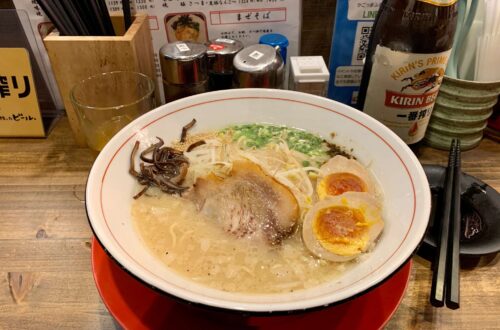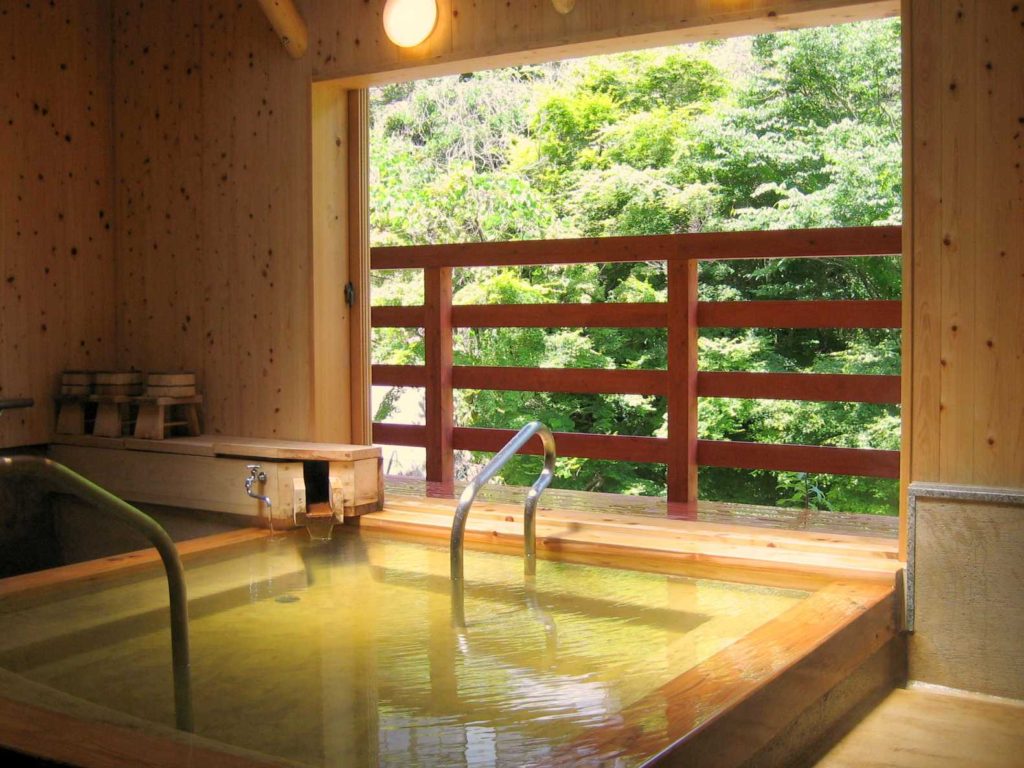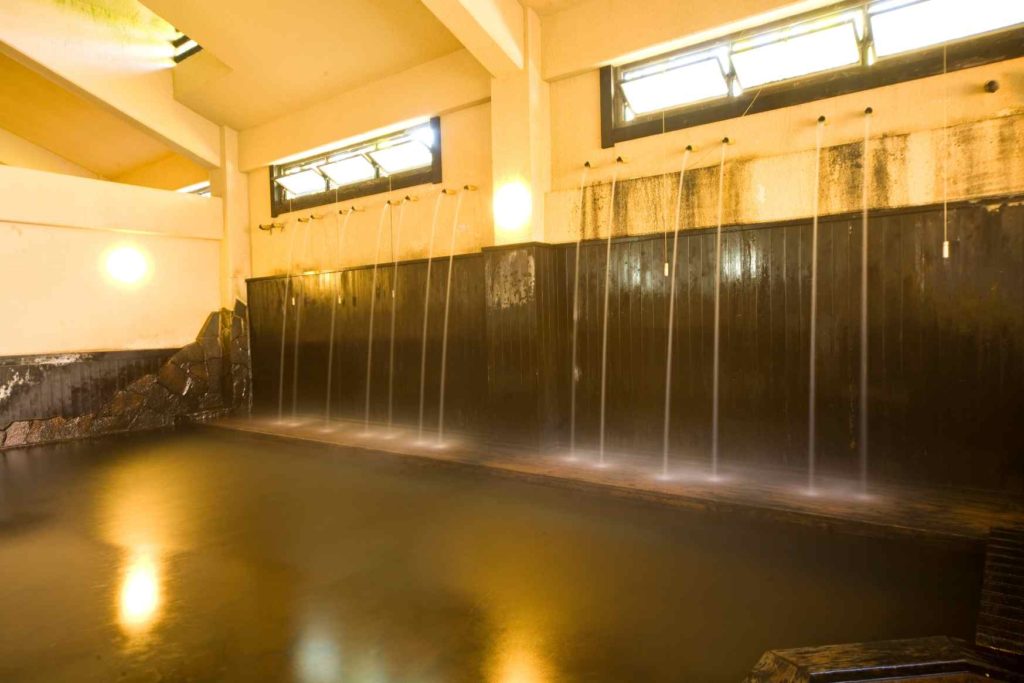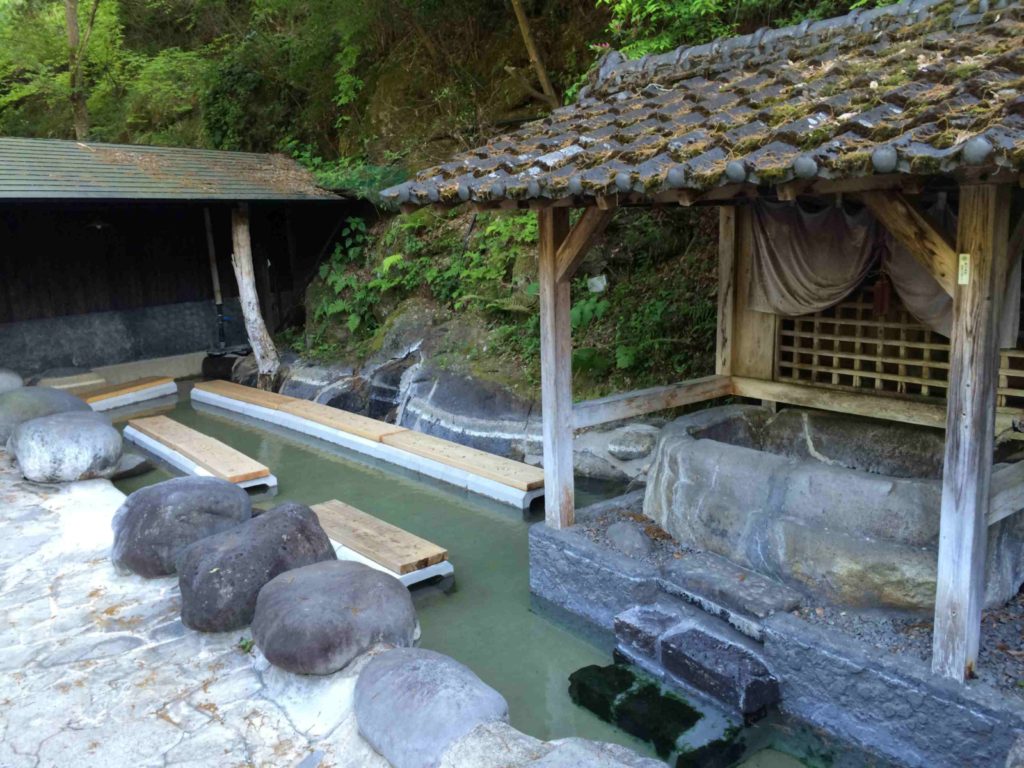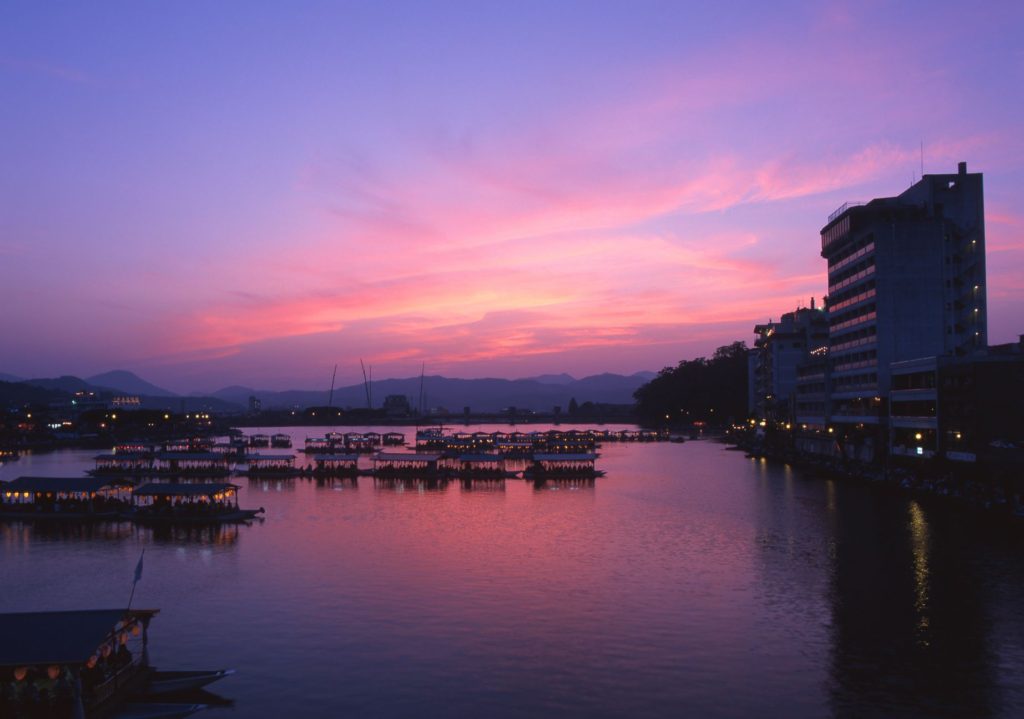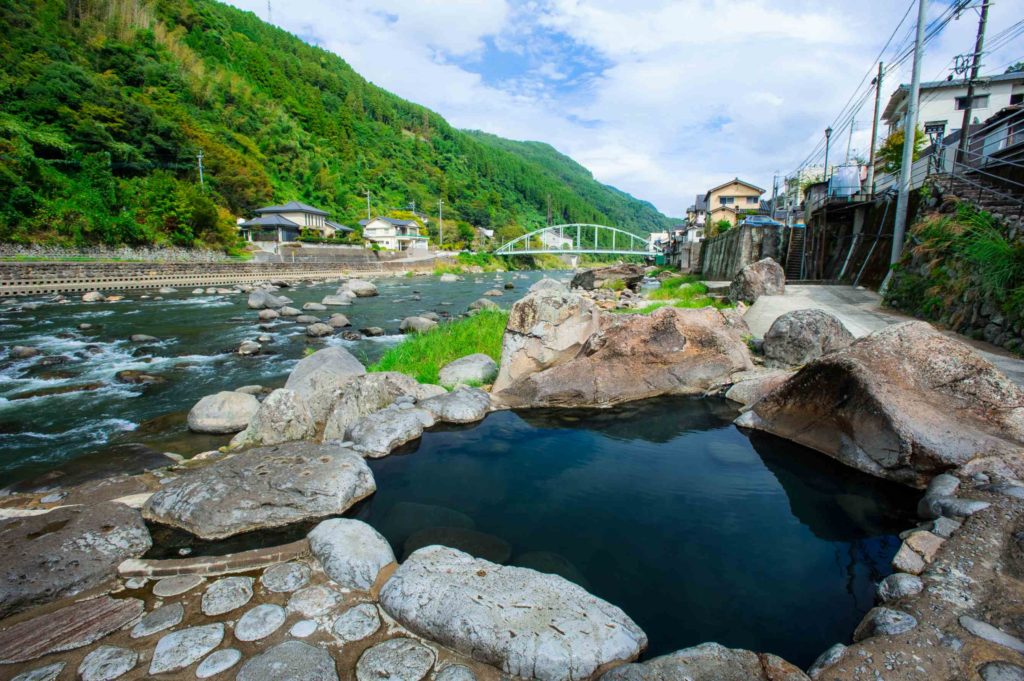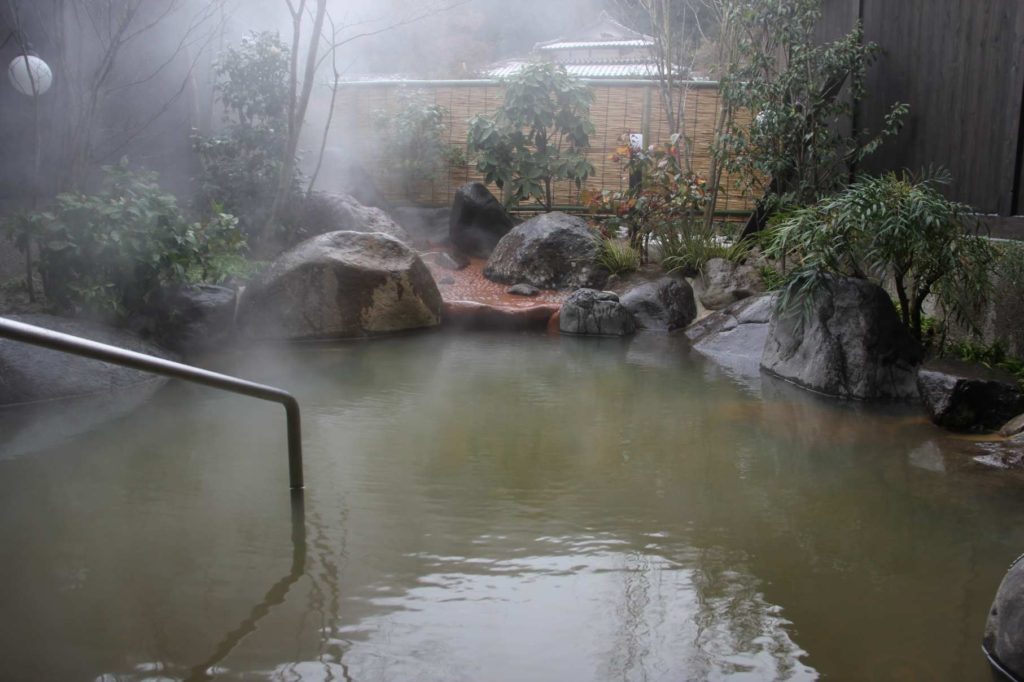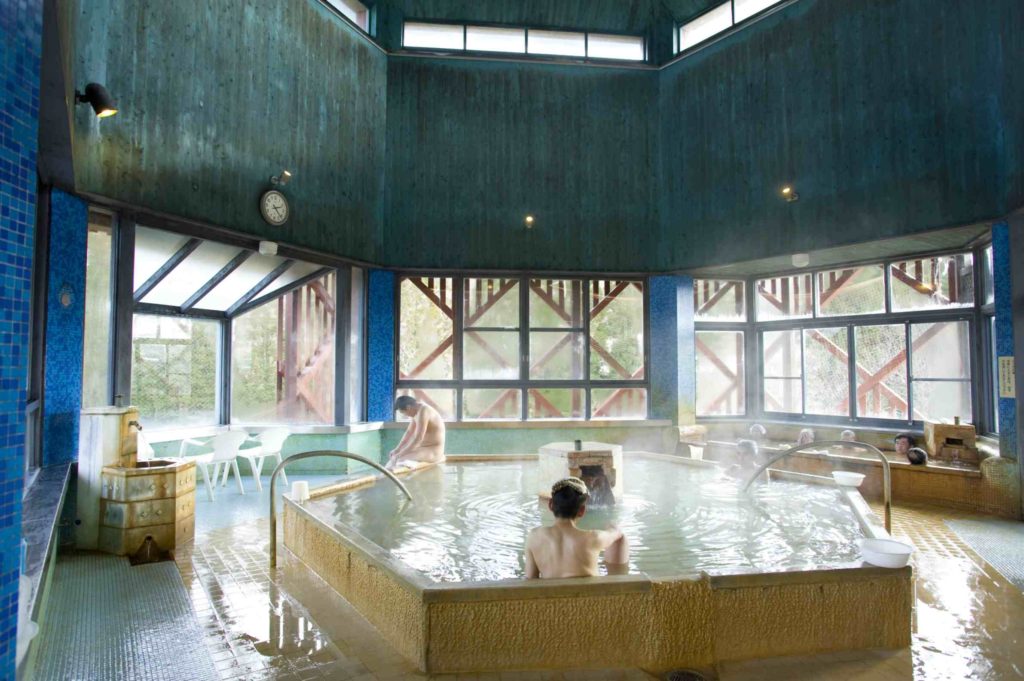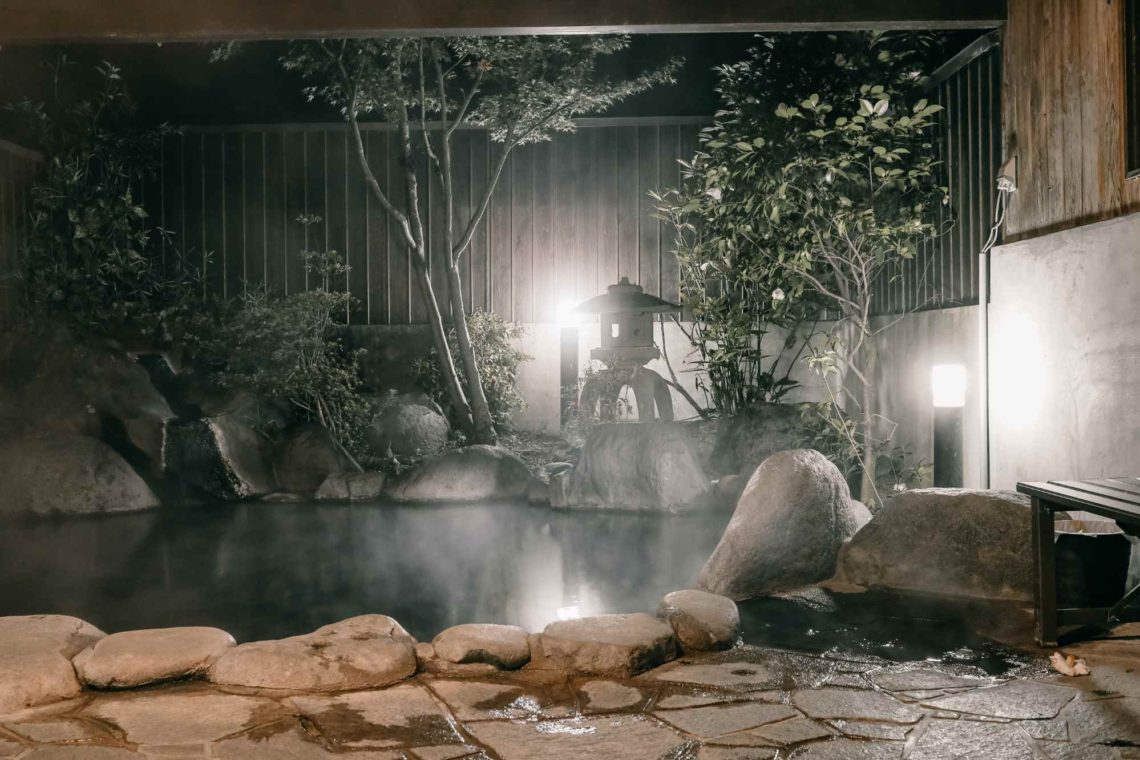
8 Genuine Onsen Spots Nearby Oita, Other than Beppu
Oita Prefecture (大分県) is certainly no stranger when it comes to hot springs/onsen (温泉) hotspots. In fact, most would often think of Beppu (別府) first when it comes to hot springs. However, did you know there are plenty more genuine places nearby Oita (大分) for a soothing dip into a hot bath? Here are 8 genuine onsen spots to visit nearby Oita.
Save In Pinterest
No time to read this onsen travel guide now? Click on the save button and pin it for later!
Table of Contents
Yufuin (由布院)
The lovely mountain town of Yufuin (由布院) is without doubt the second most renowned spot for onsen after Beppu (別府). Boasting an European-esque atmosphere; it features shopping streets, cafes and art museums waiting to be explored via foot. There is also the nearby Lake Kinrin (金鱗湖), famous for its not-to-be-missed magical morning mist scenery which occurs around 8 am every morning during fall and winter (Sep – Mar).
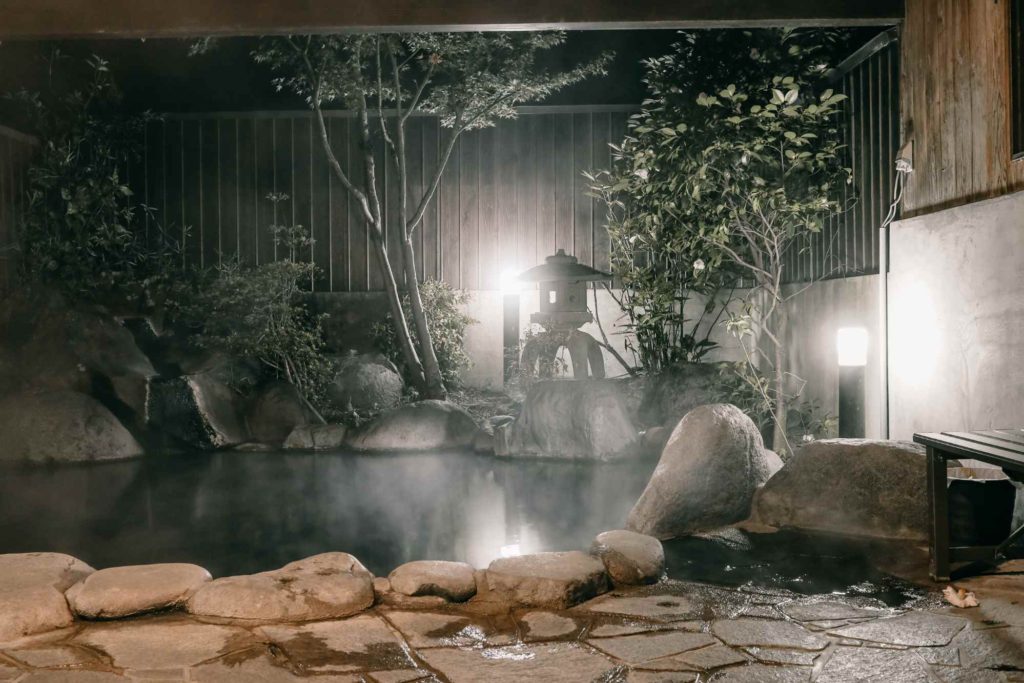
The real attraction of Yufuin lies in its variety of traditional inns/ryokan (旅館) complimented with onsen baths. Some options to consider include Ryokan Yamanami (旅館やまなみ), located in a quiet neighbourhood while offering a mesmerising mountain view and also Yufuin Iyotomi (由布院いよとみ), featuring a beautiful entrance and a lovely outdoor onsen experience of being surrounded by nature.
A Little Travel Tip
Board the Yufuin no Mori (由布院の森) rail from Oita or Hakata and disembark at Yufuin station (由布院駅. The Yufuin no Mori is a resort train that takes you on a scenic journey through Japan’s gorgeous mountainous landscape, which certainly enriches your journey on your way to Yufuin. Also, this rail is covered by the convenient all-you-can-ride JR Kyushu Rail Pass. To learn more about the JR Kyushu Rail Pass and the Yufuin no Mori rail, read here for more info.
Yunohira (由布院)
Next in our list is a town that formerly held the title as the most popular onsen resort town; until Yufuin snatched the title in the 1970s through some extensive brand restructuring. Introducing Yunohira (湯平), a little retro hot spring town located in a valley along the Kagonogawa River (阿蘇野川). Unlike European-esque Yufuin, Yunohira exudes a more traditional Japanese atmosphere, featuring vintage buildings from the 1960s. Even more so important is the town’s 300 years old main street, a cobble stone path that truly transforms into a romantic scenery on a rainy evening.
For those of you who love mingling with the locals, check out the town’s exclusive five public bath houses. Each of them cost only 200 Yen per entry; in particular the Sunayu (砂湯) provides a ‘sand bath treatment’ by gushing out hot spring from the sandy area of the bottom of the river. Or consider staying a night at Shimizu Ryokan (志美津旅館) for a relaxing bath at their unique cave onsen.
A Little Travel Tip
While Yunohira is connected via train, the distance from the train station to the town is 4 km and requires a bit of walking. As such, best to either book a taxi in advance (Yunohira’s official website contains more info on this, though only in Japanese) or alternatively, rent a car to travel to Yunohira.
Sujiyu Onsen (筋湯温泉)
Few people have certainly heard of Sujiyu Onsen town nearby Oita, but do not sleep on it. This town boasts a long and proud history of over 1,000 years as a hot spring area. Furthermore, the town is part of the Kokonoe Dream Onsen Town (Kokonoe Yume Onsengo/九重夢温泉郷), a group of hot spring towns located near the stunning Kuju Mountain Range (九重連山) nearby Oita. Sujiyu’s main charm lies in how the hot springs utilises the surrounding nature to the best of its abilities.
In particular, the Utase Daiyokujo (うたせ大浴場/literally Utase Large Bathhouse) features 18 hot springs gushing down 2 metres from above. You can in fact, soak your shoulders and back here; allowing the hot springs to provide a soothing natural massage. There is also the Iwanyu (岩ん湯), an outdoor onsen with a stone bathtub surrounded by mountain ferns; making you feel like you are in the mountains. On the other hand, interior lovers should check out the Yakushiyu (薬師湯); known for its rustic interior of being made out of high-quality cypress wood. Sujiyu Onsen is definitely the go-to spot, especially after a long day of hiking.
A Little Travel Tip
Both the Iwanyu (岩ん湯) and the Yakushiyu (薬師湯) alternate being men’s and women’s bath on a daily basis. As such, it is advisable to check the signage before barging in.
Hosenji (宝泉寺)
Another severely underrated onsen hotspot, and also part of the Kokonoe Dream Onsen Town (Kokonoe Yume Onsengo/九重夢温泉郷). Hosenji (宝泉寺/literally Jewel Spring Temple) gotten a name back in the 10th century, when a saint first planted a cedar tree in the area and claimed a miracle will occur. Later on, an earthquake struck the region and a hot spring miraculously gushed out from the roots. Said hot spring eventually became a hotspot today and is believed by locals as a treasure from the saint. The village is home to some of the oldest hot springs in the country, in particular the Ishibutsu no Yu (石櫃の湯) is a stone chest-like onsen that is said to be the largest of its kind in Japan.
Nature lovers should not miss out on the nearby Kabeyu Onsen (壁湯温泉), a remote mixed-gender onsen surrounded by rocky walls together with the tranquil forest. On the other hand, history buffs should check out the Kawazoko Onsen (川底温泉), a stone-made onsen that was discovered by the revered politician, Sugawara no Michizane (菅原道真) back in the 10th century. The best time to visit Hosenji Onsen is undoubtedly May-July whereby one can enjoy not just the onsens, but also witness the place being magically lighten up by the fireflies (hotaru/蛍), similar to a scene from the movie, Princess Mononoke (もののけ姫).
A Little Travel Tip
Definitely rent a car. I can’t stress this enough, but public transportation here is little to non-existence and the nearest train station, Bungo-mori (豊後森) is located 11 km from town.
Also don’t forget to subscribe as I will cover in more details about the onsens in Kokonoe in the future.
Hita (日田)
Most will recognise Hita as one of the ‘Little Kyotos’ of Kyushu. This is because of its uniform and parallel layout of traditional houses that are modelled after Kyoto (see my separate article to learn more of its historical value). However, did you know Hita (日田) is also a renowned onsen spot? For the hot spring hunters, look out for the Kuma district (隈町) in Hita especially. This fishing district is filled with plenty of resorts ranging from the traditional rustic ryokans to modern hotels providing a comfortable onsen experience.
Furthermore, establishments such as Kizantei and Mikuma Hotel do provide rooftop onsens where you can catch a beautiful view of the riverside during sunset. Additionally, they provide reservation services to watch the rare cormorant fishing/ukai (鵜飼) from traditional boats/yakatabune (屋形船). These involve fishermen utilising trained cormorants to first pick out sweetfishes (鮎) from the river. Later, they are prepared and served freshly on the boats, giving you a unique dining experience. An overall great onsen candidate to visit nearby Oita especially if you are looking for somewhere romantic.
A Little Travel Tip
The season to look out for is from 20th May until mid-Oct every year, and the cost per Pax is 3,000 Yen. Be sure to speak with your respective hotel to reserve a spot, as demand for it is commonly high (both Kizantei and Mikuma Hotel do provide the arrangement). Also, mid-Sep is a great time if you want to enjoy a beautiful full-moon scenery alongside the river.
Amagase (天ケ瀬)
Another onsen hotspot nearby Oita to look out for; this one being a collection of hot baths tucked inside the mountains. Amagase (天ケ瀬), together with Beppu and Yufuin forms the magnificent trio of onsen spots in Kyushu, and it certainly does’t disappoint. It’s charm lies in its mixed open-air baths located right next to the river known as Kawayu onsen (川湯温泉). Look out especially for the Jindenyu (神田湯) and the Yakushiyu (薬師湯), renowned for their relaxing atmosphere and stunning sceneries. For those who are shy, fear not as you can bring your own swimsuit, rent from a ryokan or buy one from the Amagase Tourist Information Center.
Alternatively, consider staying a night at this lovely place too. Ryokans such as the Shinshiyo (新紫陽) and the Sanso Tensui (山荘天水) offer an overall pleasant stay together with some of the most authentic hot spring baths. Soaking into the hot bath while immersing into the serene mother nature and admiring the gorgeous valley landscape is certainly an experience not to be missed.
A Little Travel Tip
Both the Jindenyu (神田湯) and the Yakushiyu (薬師湯) open up until 10 pm everyday. If you are looking for a quiet moment to relax, try out the baths at night. You will be rewarded with a gorgeous scenery of the town at night, with the lights lighting up alongside the calm river.
Bungotakada (豊後高田)
A city renowned for its rustic mountain temples and also the historic Showa Town (Showa Machi/昭和町). Aside from that, it is also contains some of the most homely hot spring baths within the prefecture. Bungotakada brands it’s hot springs as the springs of healing and recuperation. And rightfully so, as these springs contain salt minerals which is said to not only heal wounds and cure diseases, but also beautifies the skin. In fact, people have been visiting the springs since the ancient times, including the samurais from the 12th century Kamakura period (鎌倉時代).
There are a total of 6 hot springs in Bungotakada, aka the Kunisaki Rokugo Onsen (国東六郷温泉). In particular, check out the Ryoan Fukinoto (旅庵ふきのとう), a ryokan which offers not just a cozy hot spring experience, but also located close to the historic Fukiji temple (富貴寺). For the scenery lovers, consider paying a visit to Ebisudani Onsen (夷谷温泉). Ebisudani Onsen features a one-of-a-kind dark reddish-brown sulfate spring which is said to be able to cure chronic skin diseases. And above all, the nearby Ebisu-yaba (夷谷耶馬) valley is definitely worth checking out for its eccentric, yet mesmerising landscape. The rocks here line up together to form a gorge resembling a natural castle; a perfect spot especially for the photography fans.
A Little Travel Tip
Look out for some of the area’s rustic temples; including the historic Fukiji (富貴寺), the tranquil Futagoji (両子寺) and also the scenic Monjusenji (文殊仙寺). An ideal place to explore, especially if you are renting a car and going on a road trip.
Taketa (竹田)
The home to the nostalgic Oka Castle (岡城) also happens to be a hotspot for onsen nearby Oita. In fact, Taketa’s onsens are famed for their rich mineral content, said to bring health benefits and also featuring carbonated bubbles. The spring water here originates from the nearby Aso volcanic region; containing minerals and healing properties as well as being utilised for even making tofu (豆腐).
The most notable of the onsens is undeniably the Nagayu Onsen (長湯温泉), known for having the highest concentration of carbonic acid in the country. This overall not only improves the blood circulation, but also gives the onsen a slightly cooler feel; making you feel like you are bathing on a natural pool of soda. And if you can’t get enough of soda onsens, don’t forget to check out Lamune/Ramune Onsen (ラムネ温泉), named after Japan’s traditional soda pop drink, Ramune or Lamune. The resort features an outdoor carbonated pool with a warm temperature of 32C. This is great, especially for those who are temperature-sensitive, who would like to take a dip during summer, while enjoying the sensation of being massaged by bubbles.
A Little Travel Tip
Consider visiting the nearby Hakusui Dam (白水ダム), especially if you love watching sceneries. This dam is known for its elegant and curvy design; allowing water to flow beautifully along it which creates some spectacular scenery. So much so that it became a National Cultural Important Property. This place is only accessible by a car.
Overall
Oita Prefecture undeniably contains plenty of onsen spots, and rewards those who are willing to explore the countryside. Furthermore, a dip in an onsen is best enjoyed in a peaceful environment, all the more reason to explore these rural areas of Japan. A visit to Japan is undeniably not complete without going into an onsen. Also, be sure to also check out my separate article about the underrated coastal city of Oita and also on how to get there.
Loving the content here?
Subscribe and get your free hidden gems in Japan bucket list here.


You May Also Like
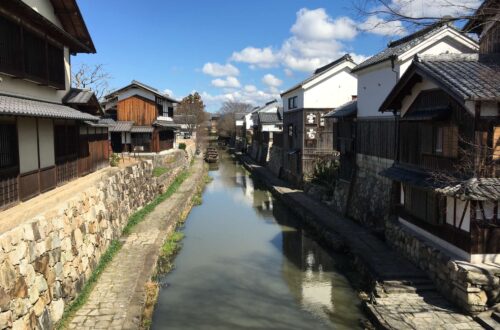
Omihachiman – Planning Your Complete Daytrip to the Venice of Japan
September 27, 2025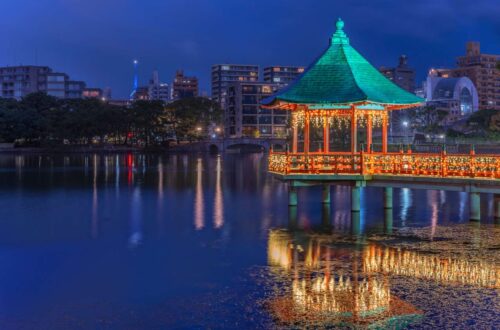
Ohori Park – The Ultimate Guide to Fukuoka’s Tranquil Park
May 6, 2023